
Prochlorococcus is a unicellular cyanobacterium that dominates the temperate and tropical oceans. It lacks phycobilisomes that are characteristic of cyanobacteria, and contains chlorophyll b as its major accessory pigment. This enables it to absorb blue light efficiently at the low-light intensities and blue wavelengths characteristic of the deep euphotic zone. It contributes 30-80% of the total photosynthesis in the oligotrophic oceans, and thus plays a significant role in the global carbon cycle and the Earth's climate. Prochlorococcus marinus MED4 is a member of Prochlorophytes. The genome of Prochlorococcus marinus MED4, a high-light-adapted strain, is 1,657,990 base pairs (bp). This is the smallest of any oxygenic phototroph—significantly smaller than[..]
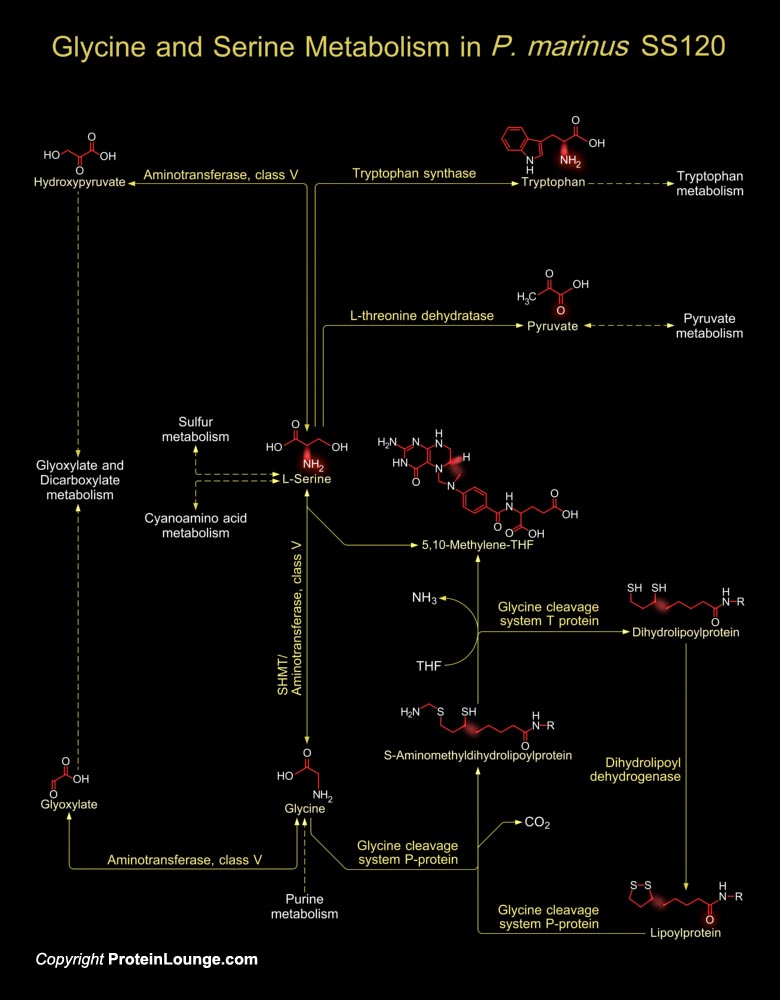
The marine unicellular Cyanobacterium Prochlorococcus is the smallest-known oxygen-evolving autotroph. Prochlorococcus marinus, the dominant photosynthetic organism in the ocean, is found in two main ecological forms: high-light-adapted genotypes in the upper part of the water column and low-light-adapted genotypes at the bottom of the illuminated layer. P. marinus SS120, the complete genome sequence reported here, is an extremely low-light-adapted form. The genome of P. marinus SS120 is composed of a single circular chromosome of 1,751,080 bp with an average G+C content of 36.4%. It contains 1,884 predicted protein-coding genes with an average size of 825 bp, a single rRNA operon, and 40 tRNA genes. It lacks many genes that are involved in photosynthesis, DNA repair,[..]
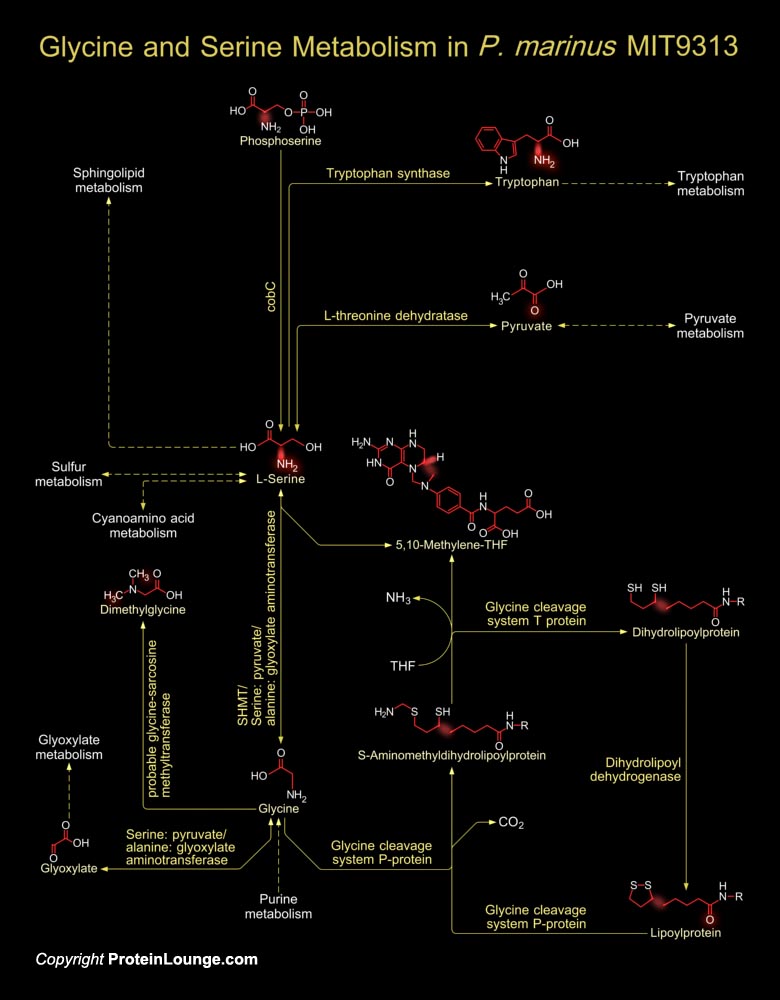
The marine unicellular Cyanobacterium Prochlorococcus is the smallest-known oxygen-evolving autotroph. It numerically dominates the phytoplankton in the tropical and subtropical oceans, and is responsible for a significant fraction of global photosynthesis. Prochlorococcus marinus lacks phycobilisomes that are characteristic of Cyanobacteria, and contains Chlorophyll b as its major accessory pigment. This enables it to absorb blue light efficiently at the low-light intensities and blue wavelengths characteristic of the deep euphotic zone. It contributes 30-80% of the total photosynthesis in the oligotrophic oceans, and thus plays a significant role in the global carbon cycle and the Earth's climate. Prochlorococcus marinus MIT9313 is a member of Prochlorophytes The[..]
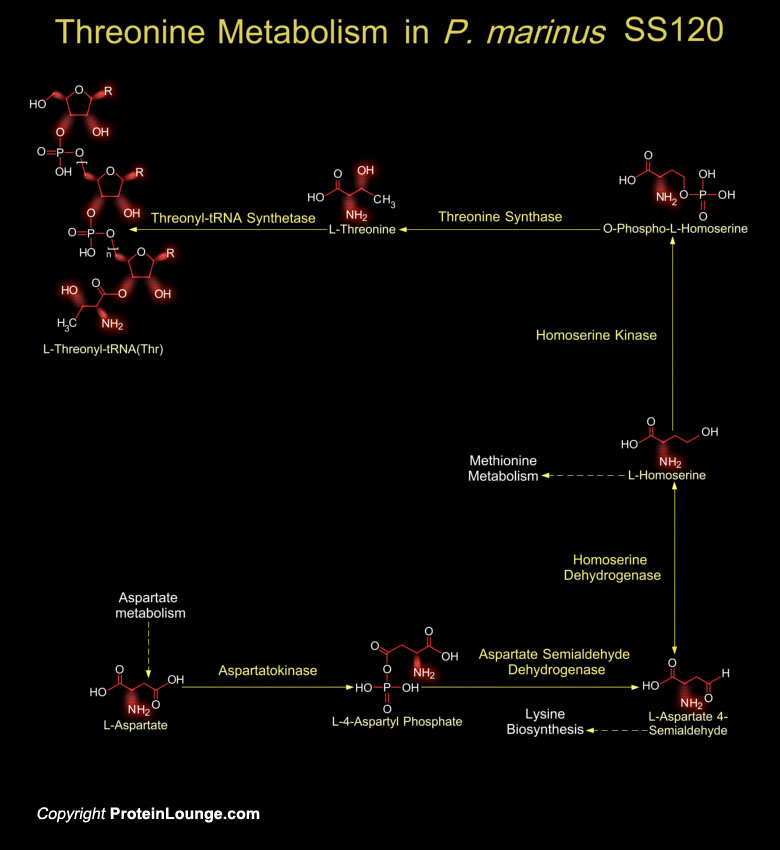
The marine unicellular Cyanobacterium Prochlorococcus is the smallest-known oxygen-evolving autotroph. Prochlorococcus marinus, the dominant photosynthetic organism in the ocean, is found in two main ecological forms: high-light-adapted genotypes in the upper part of the water column and low-light-adapted genotypes at the bottom of the illuminated layer. P. marinus SS120, the complete genome sequence reported here, is an extremely low-light-adapted form. The genome of P. marinus SS120 is composed of a single circular chromosome of 1,751,080 bp with an average G+C content of 36.4%. It contains 1,884 predicted protein-coding genes with an average size of 825 bp, a single rRNA operon, and 40 tRNA genes. It lacks many genes that are involved in photosynthesis, DNA repair,[..]
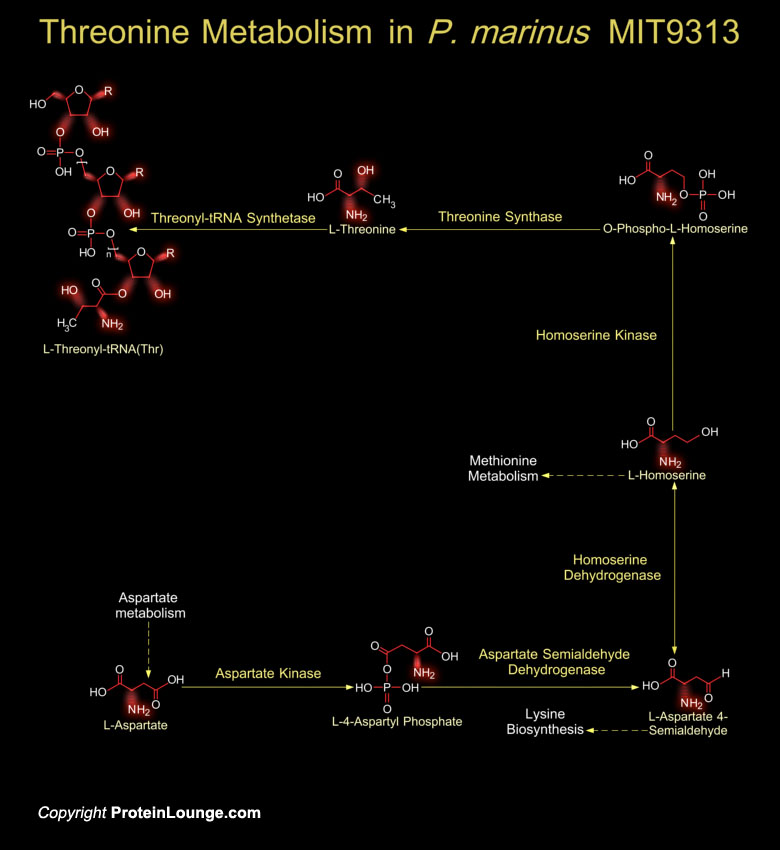
The marine unicellular cyanobacterium Prochlorococcus is the smallest-known oxygen-evolving autotroph. It numerically dominates the phytoplankton in the tropical and subtropical oceans, and is responsible for a significant fraction of global photosynthesis. Prochlorococcus marinus lacks phycobilisomes that are characteristic of cyanobacteria, and contains chlorophyll b as its major accessory pigment. This enables it to absorb blue light efficiently at the low-light intensities and blue wavelengths characteristic of the deep euphotic zone. It contributes 30-80% of the total photosynthesis in the oligotrophic oceans, and thus plays a significant role in the global carbon cycle and the Earth's climate. Prochlorococcus marinus MIT9313 is a member of Prochlorophytes The[..]
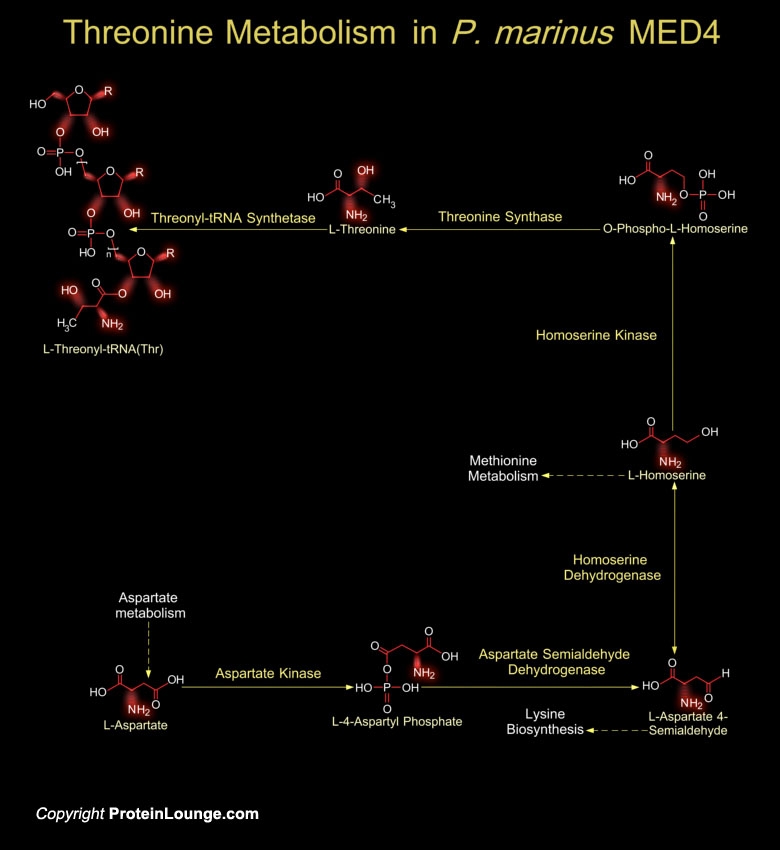
Prochlorococcus is a unicellular cyanobacterium that dominates the temperate and tropical oceans. It lacks phycobilisomes that are characteristic of cyanobacteria, and contains chlorophyll b as its major accessory pigment. This enables it to absorb blue light efficiently at the low-light intensities and blue wavelengths characteristic of the deep euphotic zone. It contributes 30-80% of the total photosynthesis in the oligotrophic oceans, and thus plays a significant role in the global carbon cycle and the Earth's climate. Prochlorococcus marinus MED4 is a member of Prochlorophytes. The genome of Prochlorococcus MED4, a high-light-adapted strain, is 1,657,990 base pairs (bp). This is the smallest of any oxygenic phototroph—significantly smaller than[..]
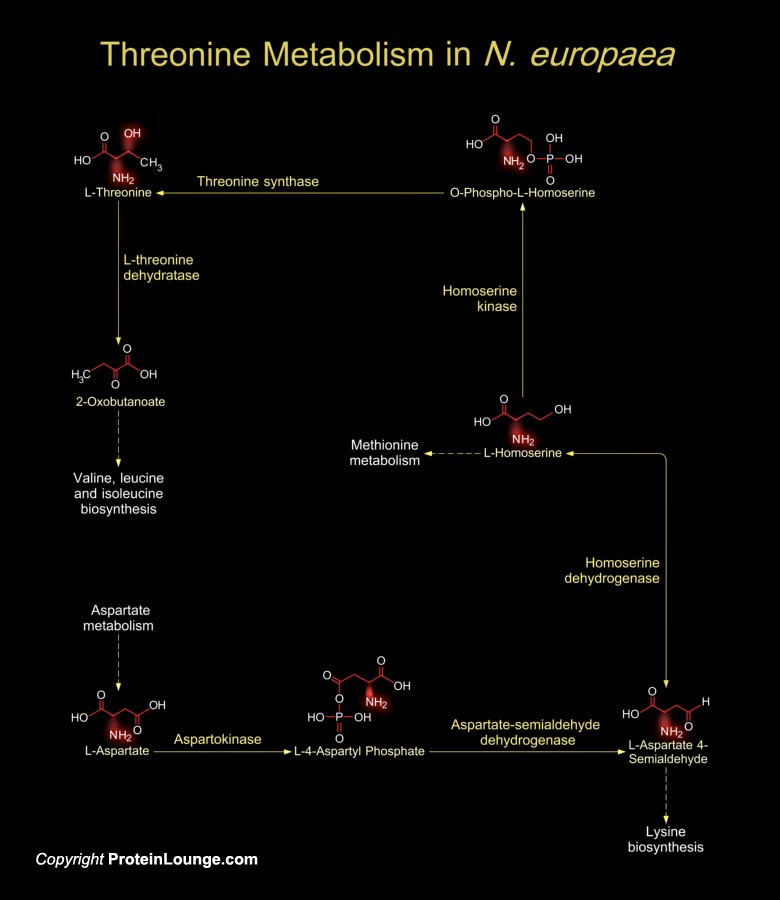
Nitrosomonas europaea is a gram-negative obligate chemolithoautotroph that can derive all its energy and reductant for growth from the oxidation of ammonia to nitrite. Nitrosomonas europaea participates in the biogeochemical N cycle in the process of nitrification. It lives in several places such as soil, sewage, freshwater, the walls of buildings and on the surface of monuments especially in polluted areas where air contains high levels of nitrogen compounds. This microbe prefers an optimum pH of 6.0-9.0, fairly neutral conditions, has an aerobic metabolism and prefers a temperature range of 20-30 degrees centigrade. Most are motile with flagella located in the Polar Regions although some species are nonmotile. The cell's demand for carbon has to be met almost[..]
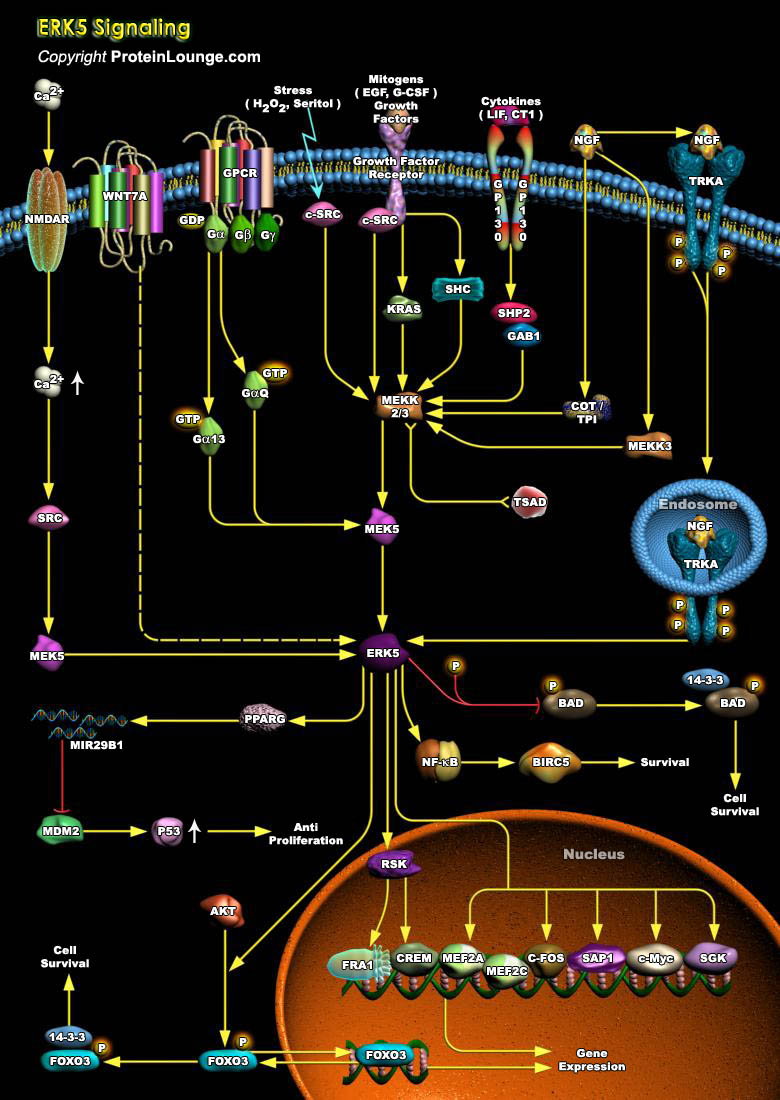
ERK5 (also known as the BMK1 (Big MAP Kinase-1)) is an atypical MAPK that can be activated in vivo by a variety of stimuli, including Serum, Growth factors including EGF (Epidermal Growth Factor), NGF (Nerve Growth Factor) and BDNF (Brain-Derived Neurotrophic Factor), GPCRs (G-Protein Coupled Receptors), Lysophosphatidic Acid, Neurotrophins and Phorbol ester and some Cellular stress such as Oxidative and Osmotic Shock. MAPK (Mitogen Activated Protein Kinase) cascades play important roles in many cellular processes including cell proliferation, differentiation, survival and apoptosis. They are also important for many physiological functions in several systems, including in developmental, immune and neuronal systems. At least 12 isoforms of MAPKs exist in mammalian[..]
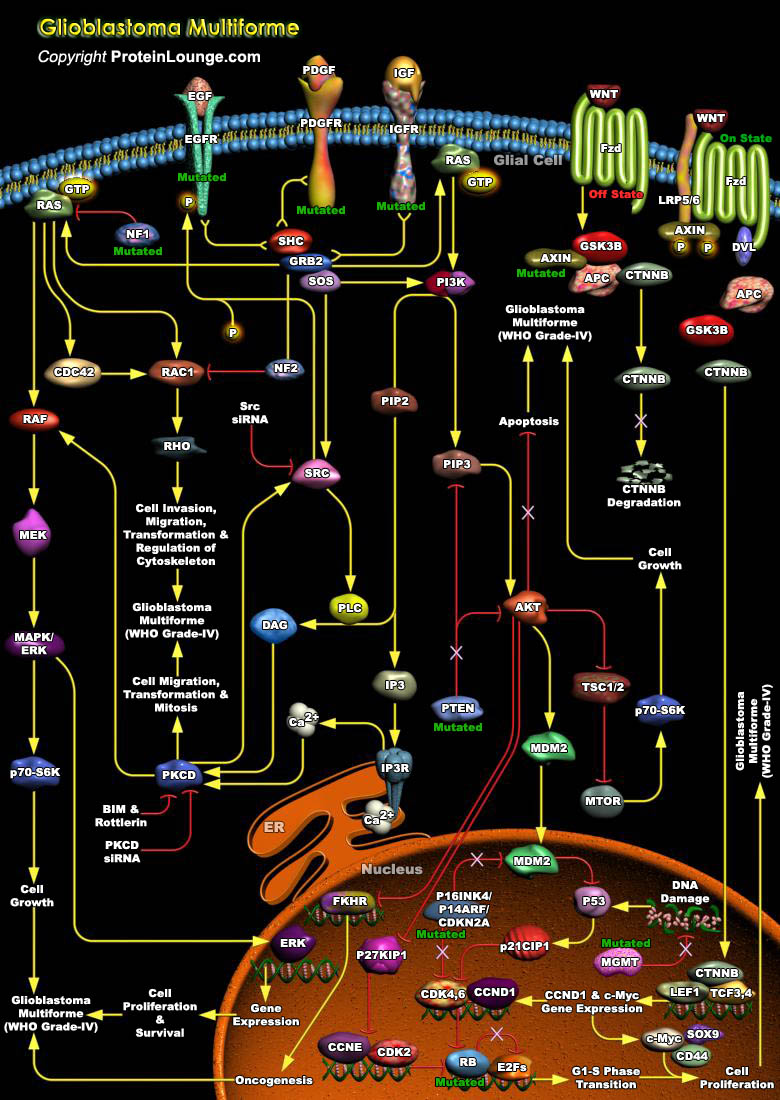
Glioblastoma Multiforme (GBM) is biologically aggressive neoplasms which have an elevated, often aberrant, proliferative capacity with a diffuse pattern of brain invasion. It is the most malignant Astrocytic tumor, composed of poorly differentiated neoplastic astrocytes. The World Health Organization (WHO) grading system classifies Gliomas into Grades I-IV based on the degree of malignancy, as determined by histopathological criteria. In the Central Nervous System (CNS), Grade-I Gliomas generally behave in a benign fashion and might even be circumscribed, whereas Grade-II, Grade-III and Grade-IV Gliomas are malignant and diffusely infiltrate throughout the brain. Glioblastoma Multiforme falls under the Grade-IV category. Glioblastoma Multiforme or the WHO Grade-IV[..]

ILK(Integrin-linked kinase) is a key scaffold protein that localizes to focal adhesions, acts as a central component of a heterotrimer (the ILK–PINCH–parvin complex). Since its discovery, ILK has been demonstrated to have an essential role in connecting the cytoplasmic tail of β subunits of integrins to the actin cytoskeleton, and in regulating actin polymerization. Within this pivotal position, ILK has been shown to interact with many intracellular proteins through PINCH or parvin to mediate diverse arrays of biological events,or to mediate cell responses induced by the interaction of integrins with the ECM(extracellular matrix)(Ref.1). Several adaptor proteins with Actin binding properties interact with the C-terminus (COOH-terminus) of ILK.[..]

In response to Retinoic Acid (a metabolite of Vitamin-A (all-trans-Retinol), which affects gene transcription), target genes are regulated by two families of nuclear receptors, the RARs (Retinoic Acid Receptors) and the RXRs (Retinoid X Receptors) that bind as RAR/RXR heterodimers to response elements located in their promoters. The all-trans-Retinoic Acid, the Carboxylic Acid form of Vitamin-A is of biological significance since it is predominant under most physiological situations and explains all of the biological effects of Vitamin-A (Ref.1). Biologically active ligands for the RARs include all-trans-Retinoic Acid, 9-cis-Retinoic Acid among others, yet circulating levels of 9-cis-Retinoic Acid are much lower than those of all-trans-Retinoic Acid and the[..]
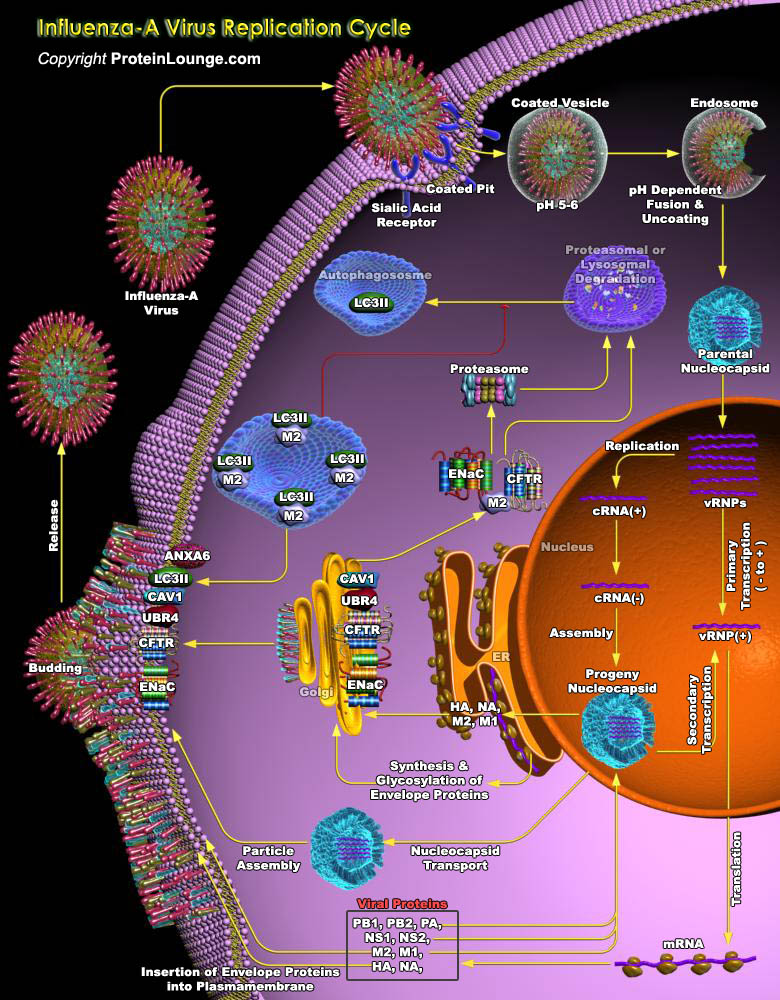
Influenza (mostly referred to as “flu”) is a contagious viral infection caused primarily by the influenza virus A or B. It affects mainly the upper respiratory organs (i.e., the nose, throat, bronchi, and infrequently, lungs) but other organs such as the heart, brain, and muscles can be involved. It occurs worldwide and causes considerable morbidity and mortality with pandemic, epidemic, or seasonal patterns. Typical Influenza illness includes fever and respiratory symptoms, such as cough, sore throat, runny or stuffy nose, as well as headache, muscle aches, and often extreme fatigue. Although nausea, vomiting, and diarrhea can sometimes accompany Influenza infection, especially in children, these symptoms are rarely the primary symptoms. Most people[..]

